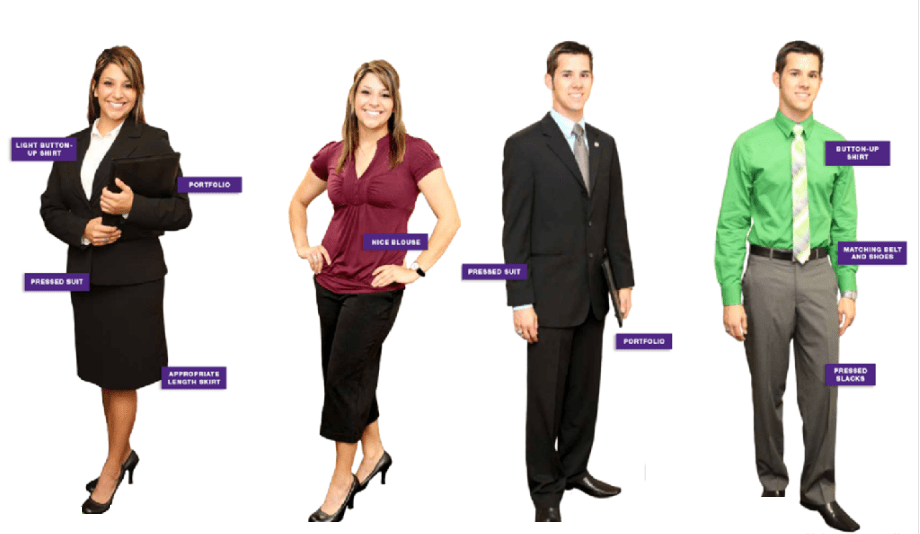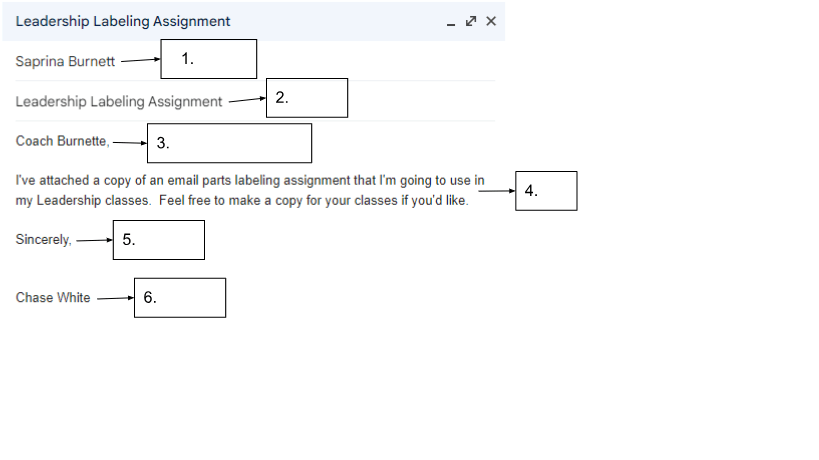It takes just a quick glance, about ______ seconds, for someone to evaluate you when you meet for the first time.
3
_________ is the unspoken element of communication that we use to reveal our true feelings and emotions
Body Language
Communication is a ____ way process.
Two
Give an example of a good subject line.
Answers may vary:
"Meeting this Afternoon"
"Missing Homework"
How many pages should a resume be?
One
Teams wager a specific amount of points before the final question.
Draw a model of the Communication Cycle and explain the process.
Answers on dry-erase boards
The person you are meeting for the first time doesn't know you, so your ________ is usually the first clue he or she has to go on.
Appearance
Your _______ shines through in everything you do.
Attitude
Communication is a ______, learn and practice
Skill
Give 2 examples of a professional greeting.
Answers may vary:
Dear, Good morning/afternoon, To whom it may concern, etc.
What is the first thing that an employer should see when looking at your resume?
Your name and contact information
Being on time is the first step toward creating a great first impression. What are some good plans that you can make to guarantee that you arrive on time?
Plan to arrive a few minutes early and allow flexibility for possible delays in traffic or taking a wrong turn.
What are some tips to make sure that you give your new acquaintance your full attention?
Set aside modern-day distractions, for instance, by turning off your cell phone so that you can give the person your full attention.
And don't get sidetracked by other people.
In communication, what is the difference between encoding and decoding messages?
Encoding is thinking about what to say to send a message, and decoding is receiving and processing/understanding the message.
Give 3 examples of a professional closing.
Answers may vary:
Sincerely, Sincerely yours, Thank you, Respectfully, Cordially, etc.
What are 3 things you should avoid on your resume?
Answers may vary:
Personal identification such as your social security number, Fancy/Cursive Fonts, Long paragraphs to describe position duties, Unprofessional email address, Unprofessional picture, etc.
What are some examples of body language that you should avoid when trying to make a good first impression?
Answers may vary:
Closed postures - defensive, arms-crossed posture, or restlessly tapping your feet.
Avoiding eye contact/not giving them your full attention
What type of attire is each person wearing? Start from the left.
Business Professional, Business Casual, Business Professional, Business Casual
What are 4 examples of communication channels?
Answers may vary:
Face-to-Face, Text, Phone Call, Email, Social Media, Voicemail, etc.
Explain the difference between cc and bcc in emails.
cc (carbon copy) means somebody other than the recipient will get a copy of the message and the recipient will be able to see who does. Bcc (Blind carbon copy) is the same as cc, but the recipient will not be able to see who is receiving the copy of the email.
List at least four skills to include in a resume.
Answers may vary:
Communication, Leadership, Creativity, Time Management, Team Work, Problem Solving, Decision-Making, Conflict Resolution, Active Listening, etc.
In first impressions, the other person forms an opinion about you based on what 5 things?
Your appearance
Your body language
Your demeanor
Your mannerisms
How you are dressed
What are 3 examples of body language that will help create a good first impression?
Answers may vary:
Open posture, standing/sitting up straight, smile, make eye contact, greet with a firm handshake
What are 5 examples of communication barriers?
Answers may vary:
Social, Age, Religion, Gender, Psychological, Cultural, Physical, Physiological, Language, etc.
Email Labeling
1. Recipient
2. Subject line
3. Greeting
4. Body
5. Closing
6. Signature
7. Attachment
List at least five different headings that you should include in your resume.
Name and contact information, Profile, Education w/ Coursework, Work/Volunteer Experience, Key Skills, Awards/Achievements, References